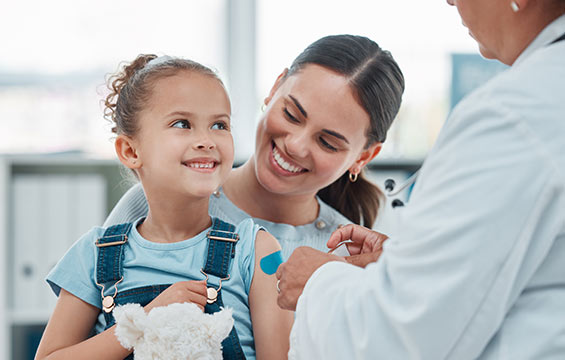Vaccination, Explained!

Exploring the answers to common questions
How do vaccines work? Why does getting a vaccine sometimes make you feel sick? What are antibodies, and how does your body make them?
It’s normal to have questions about the complex science of vaccination, viruses and immunity. That’s why our researchers have set out to answer some of the questions we hear most often from our Science Centre visitors.
In this series of videos, we’ll explore what happens in your body when you get a vaccine, how viral mutation works, and the power of antibodies.
Have you ever felt pain, fever or fatigue after getting a vaccine? You’re not alone! Find out what’s happening inside your body as your immune system learns how to protect you from a virus.
Have you ever wondered why you need more than one dose of some vaccines? One reason is viral mutation. Learn how some viruses mutate faster than others, and find out how another dose can help keep you—and everyone else—healthier.
How do vaccines help prepare your immune system for encountering a virus? Let’s talk antibodies! Explore how antibodies come into play and learn how vaccination gives your immune system a head start.
| A3.1 | describe practical applications of science and technology concepts in their home and community, and how these applications address real-world problems |
|---|
| B1 | Analyse impacts of various social and environmental factors, human activities, and technologies on human health |
|---|---|
| B1.1 | assess effects of a variety of social and environmental factors on human health, and describe ways in which individuals can reduce the harmful effects of these factors and take advantage of those that are beneficial |
| B2 | Demonstrate an understanding of the structure and function of human body systems and interactions within and between systems |
| B2.1 | identify systems of the human body, and describe their basic function |
| B2.3 | describe interrelationships between human body systems |
| B1.3 | describe public health strategies related to systems biology (e.g., cancer screening and prevention programs; vaccines against the human papillomavirus [HPV] and measles, mumps, and rubella [MMR]; AIDS education), and assess their impact on society [AI, C] |
|---|---|
| B3.4 | explain the primary functions of a variety of systems in animals (e.g., the circulatory system transports materials through the organism; the respiratory system supplies oxygen to and removes carbon dioxide from the body) |
| B3.5 | explain the interaction of different systems within an organism (e.g., the respiratory system brings oxygen into the body, and the circulatory system transports the oxygen to cells) and why such interactions are necessary for the organism’s survival |
| B3.4 | explain the general function of some of the systems in the human body (e.g., the function of the circulatory system is to transport materials through the body; the function of the digestive system is to absorb nutrients; the function of the respiratory system is to bring oxygen into and remove carbon dioxide from the body) |
|---|---|
| B3.5 | describe the interaction of systems in the human body (e.g., the respiratory system brings oxygen into the body, and the circulatory system transports the oxygen to cells), and explain why these interactions are necessary for survival |
| C3.5 | describe how different viruses, bacteria, and fungi can affect host organisms, and how those effects are normally treated or prevented |
|---|
| B2 | investigate the uses of, and analyse the information provided by, a variety of medical technologies; |
|---|---|
| B3 | demonstrate an understanding of the function and use of a variety of medical technologies and the information they provide about the human body |
| C1 | evaluate the impact of scientific and technological knowledge and individual behaviour on the control of pathogens and the prevention of disease; |
| C2 | investigate the nature and growth of pathogens and the effectiveness of measures intended to prevent their spread; |
| C3 | demonstrate an understanding of pathogens, the diseases they cause, and ways of controlling their spread. |
| E3 | demonstrate an understanding of major public health issues, past and present. |
| A1.3 | explain how personal health practices, health knowledge, and healthy behaviours and attitudes contribute to the protection and improvement of an individual’s health |
|---|---|
| C2.3 | explain how government policies and programs for protecting the environment can also provide community health benefits |
| C3.1 | describe actions that individuals can take that contribute to the health of others |
